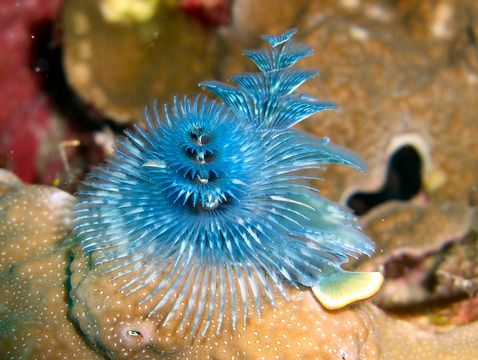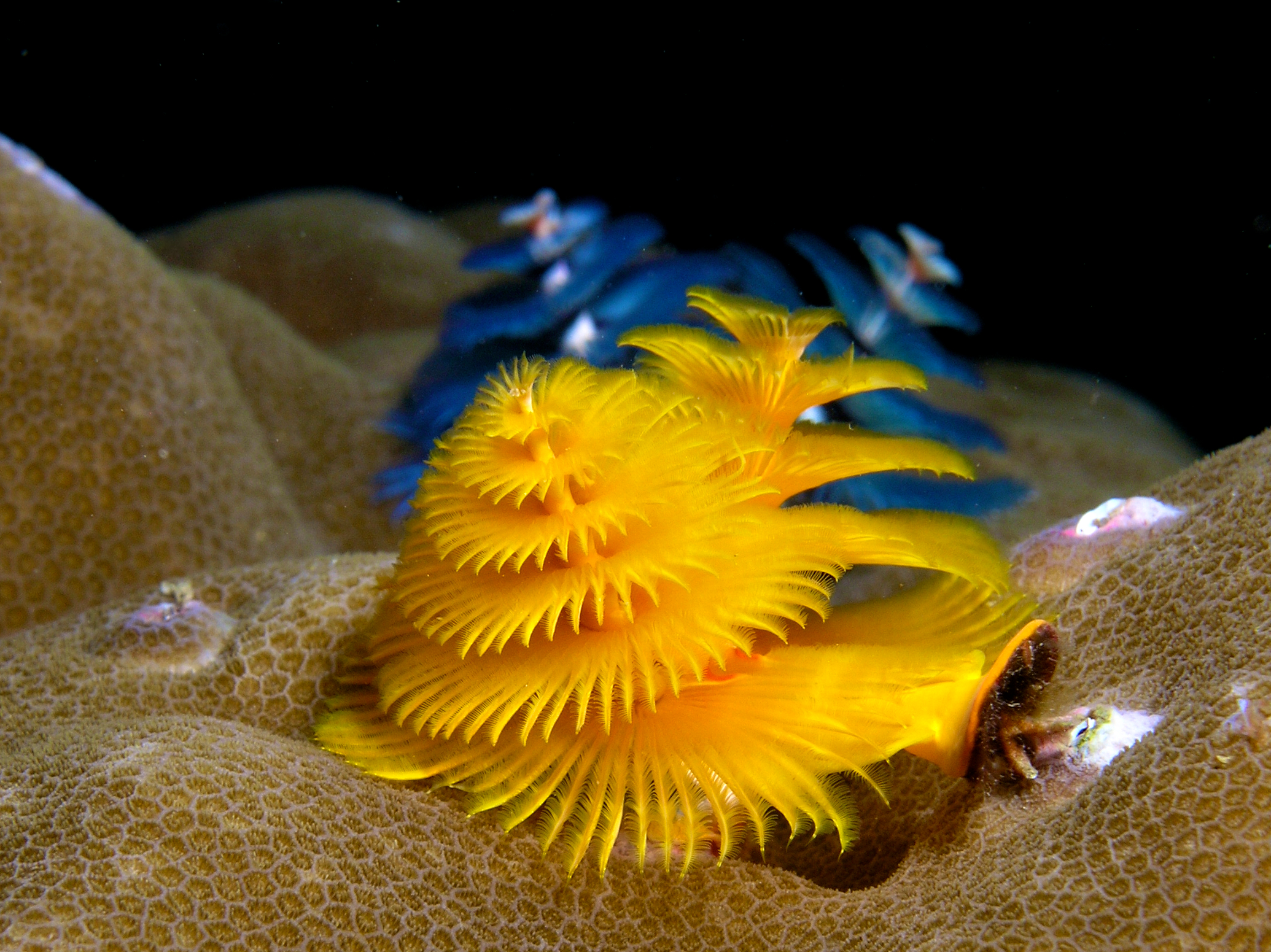Published in the Ocean Watch column, Honolulu Star-Advertiser © Susan Scott
May 27, 2013
What’s this? A big orange cushion star with its own pair of shrimp! I must write about them.
But oh, the fish! I have to describe humbug damselfish. Shrimp gobies. Lemonpeel angelfish.
 Blue Christmas Tree Worm by Tim Sheerman-Chase used under Creative Commons License.
Blue Christmas Tree Worm by Tim Sheerman-Chase used under Creative Commons License.
Then again, the giant clams glow so brilliantly in the noontime sun they practically hurt my eyes. They must be my first subject.
But how can I skip the multiple sharks that are almost begging to be better understood?
To clear my mind of its saltwater delirium, back on my sailboat, Honu, I rinsed off with some precious fresh water, opened my books and made a commitment to share the joy of worms.
During an early snorkeling excursion, I found a stand of coral as splotched with color as the brightest aloha shirt. So full of tropical flowers was the coral head that I could barely make out its lime green base.
As I swam nearer I saw the creatures responsible for the lovely garden: a dense colony of Christmas tree worms.
These tropical marine creatures look more like plants from a Dr. Seuss book than worms. Their tentacles’ shape is similar to that of stubby pine trees except the branches spiral around a center trunk and come in a stunning array of colors. Some are solid reds, yellows, blues and greens; some wind around in stripes and others are almost plaid.
Mature Christmas tree worms’ tentacles are as big around at the base as they are tall, from 1 to 2 inches here in the South Pacific. Hawaii’s Christmas tree worms grow to only about a half-inch high and across.
The worm begins life as a tiny top-shaped larva that swims, drifts and eats other plankton. After a few weeks of wandering, the maturing worm settles down on a living coral head. There it secretes a calcium carbonate tube around its body. This kills the coral polyps below.
The worm keeps up with new coral growing around it by secreting, in rings, new “floors” to its home base.
These worms never leave their dwellings. To get food and oxygen, the worm holds its pair of treelike tentacles into the current, snaring tiny organisms that drift past.
These gorgeous appendages are supersensitive to light and nearby water pressure. Get close enough, as I do when taking pictures, and the worm withdraws its branches in a flash, slamming its door shut. (Sorry, the satellite phone I use to send my stories from sea can’t do photos.) The door is a round hard shell similar to that of a snail’s operculum, commonly called a cat’s eye.
Seconds later the worm peeks out. If the coast is clear, the two tentacle trees emerge like a fast-frame film of a flower blooming.
The sight is so inspiring it makes me want to design my own Christmas tree worm aloha shirt — including, of course, cushion stars, shrimp, gobies, angelfish, clams and sharks.
 Christmas Tree Worm. By Nhobgood Nick Hobgood (Own work)
Christmas Tree Worm. By Nhobgood Nick Hobgood (Own work)
[CC-BY-SA-3.0 or GFDL], via Wikimedia Commons